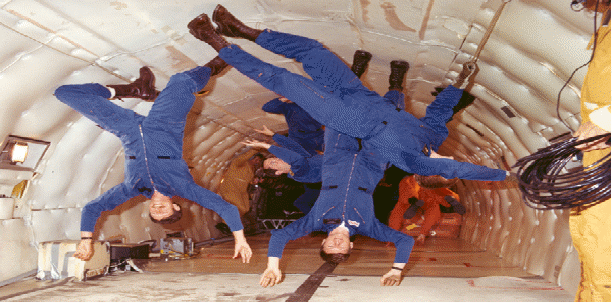Weightlessness in the sense we use it is due to the absence of a net external force acting on a body relative to it's surroundings, and may arise in a variety of circumstances.
A person standing on the Earth's equator weighs slightly less than they do at the north pole and the south pole. The difference is small – about 0.3%. The size of the difference can be increased if the rate of rotation of the Earth can be speeded up, and if the Earth could be speeded up so that it spins fast enough, the difference would be zero. A person at the equator would then weigh nothing and could float freely. The force of gravity continues to act, but is opposed by the centripetal force created by the spinning of the Earth.
A person standing in a lift may be unlucky enough for the cable holding the lift to break. If this happens, the lift will start to fall freely under gravity. The person in the lift will also fall freely under gravity, and the person may find themselves floating freely in the lift. This will be the case until the lift is moving so that air resistance can act on the lift and slow it's acceleration. The person in the lift does not feel air resistance SINCE THEY ARE MOVING SLOWLY RELATIVE TO THE AIR IN THE LIFT WHICH IS MOVING WITH THE LIFT> The person will continue to fall under gravity and when air resistance slows the lift, they will meet the floor of the lift again.
Objects moving in space far from all sources of gravity experience weightlessness experience no external forces acting on them.
Astronauts in orbit around the Earth experience weightlessness. They can float freely inside their spacestations and will feel no force if they stand on the floor.

Notice that it is not required for weightlessness that a body feel no external force, only that if there are external forces that they act to produce the same acceleration on a body as on it's surroundings.
